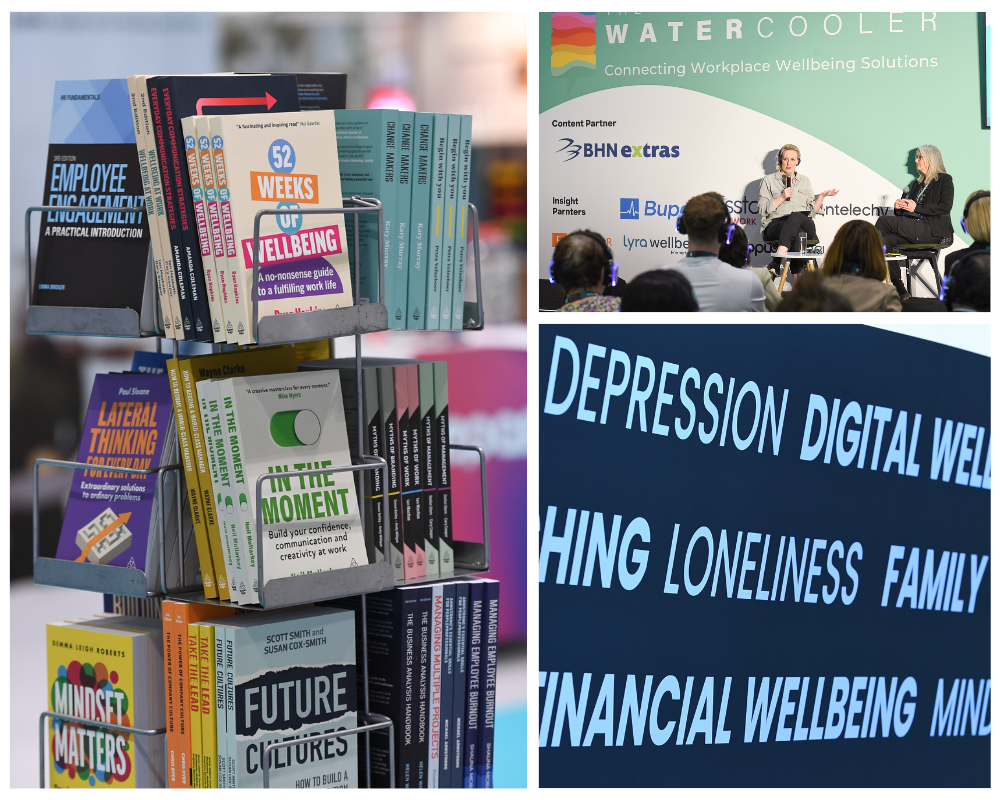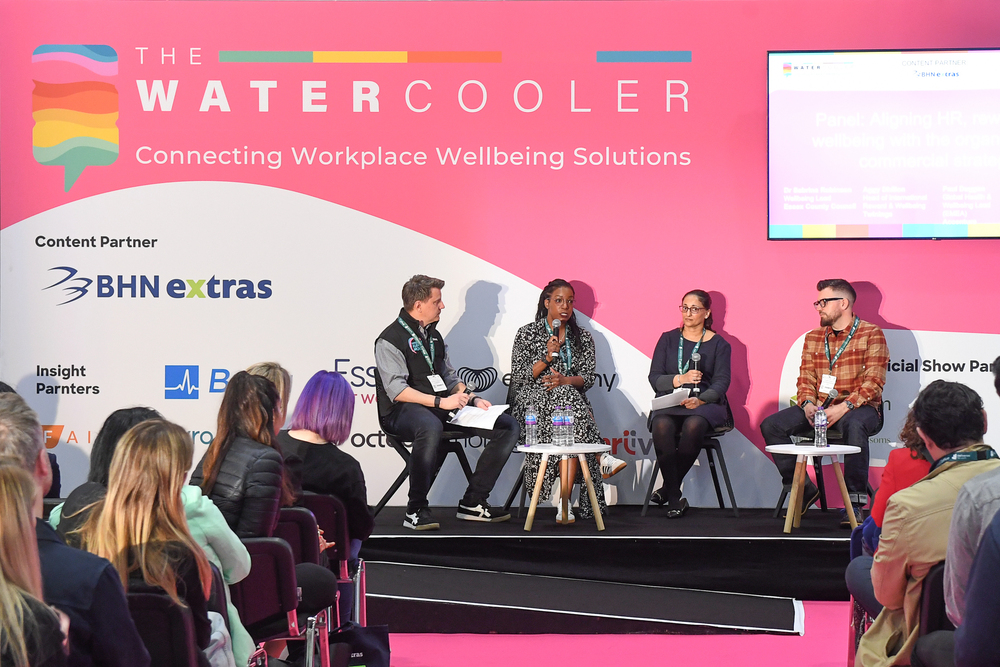What do you have in place to support the mental health and wellbeing of your employees? If you ask this question of HR and Wellbeing leaders, the most common response will undoubtedly include “We have an EAP”. According to XpertHR, 9 in 10 employers have an EAP, or Employee Assistance Programme to give it its full title.
So with such a seemingly tight grip on the market, do EAP providers need to evolve their offering?
I believe they do. Not least because it is a crowded market and employers frequently swap their EAP providers. This was highlighted in a recent Make a Difference webinar, with the attendee poll showing 41% of employers are currently looking at changing their EAP. Add to this the arrival of innovative new players such as Headspace entering the market, it feels like the traditional providers’ market is at risk.
One of the strongest criticisms of EAPs has been low workforce engagement rates. Latest research from the Employee Assistance Professionals Association UK shows employee EAP usage had risen to 12% in 2023. This is higher than other reports, but still a figure that needs to improve. Especially when you consider the majority of workforce staff remain unengaged.
What are the challenges?
If EAPs are to evolve, here are the crucial challenges I feel they need to overcome:.
- Communication: EAPs are suffering an identity crisis. It is a crowded market, with providers’ offerings blurring into one another. This makes it increasingly difficult for employer buyers to differentiate between providers, which also pushes price nearer to the top of employers’ decision making.
- Relevance: In the webinar, Suzanne Summerfield, PIB Employee Benefits shared employee feedback that “People don’t understand what an EAP does.” I believe this is true too. Can employees recall the term EAP before? If they have, do they understand its purpose or how it is relevant to them? For most employees, the time when they are most likely to encounter or seek out their company’s EAP will be when something is going wrong. So how can EAPs become more relevant for more people and where next for EAPs?
- End-to-end support: With referrals now coming from Mental Health First Aiders and other parts of organisations, anecdotal evidence suggests that EAP providers are having to support a wider range of needs. Amy McKeown qualifies this “When we look at EAPs we have to also understand that they are currently having to provide support that goes beyond what they were originally set up to do. EAPs are now dealing with high acuity and crisis level support which is not what they were designed for.” The challenge is how can providers accommodate higher numbers to support both upstream and downstream needs?
1. End-to-end support
Much like physical health insurance, EAPs have become the place where employees are pointed to when things go wrong. In the workplace, the intention to move beyond being a reactive service and move into the prevention space has been highlighted by Karl Bennett, chair of the Employee Assistance Professionals Association UK. He said in regards to prevention “As a sector we need to be encouraging a focus on the preventative elements of our services, adding more non-clinical services like Mental Health Coaching.” He also talks elsewhere about how “…ensuring there are earlier interventions among employees in order to avoid the need for counselling, a strong non-clinical service dealing with underlying issues backed up by more training for staff around mental health.”
Achieving this will rely on the ability for EAPs to become relevant to more employees, more of the time. With approximately 15% of people experiencing mental health problems in the workplace, EAPs have the potential to reach a far larger proportion of the workforce by becoming prevention focused. With 35% currently taking time off due to mental health and over half saying they feel uncomfortable talking about it, it is these groups EAPs need to engage with earlier and provide early interventions.
Be relevant from the start
EAPs need to have a strategy to be relevant to the whole employee lifecycle, from the point of starting their first role and focusing on helping mentally healthy people build resilience and nurturing healthy life routines. A bit like healthy diets and regular exercise can help prevent physical health problems manifesting.
Think early intervention
This is where Headspace and less traditional EAPs can change things up. Paraphrasing Russell Glass, CEO of Headspace, from the webinar “Most employees don’t know what their (mental health) needs are…they know they have a problem and they need guidance.”
Being relevant to an employee’s work life from starting their new role, becoming a working parent, through the good times too, will build user trust and usage can become a regular part of a person’s weekly routine. This means an EAP can become a trusted resource they can feel comfortable turning to for direction regarding any questions they have.
Triage and crisis support
Given the well documented pressures on public health systems, we would expect a reliance on private support options. Karl Bennett says in regards to the role of EAPs “We also need to lead the discussion around moving EAPs into a longer term assessment and treatment model, properly equipped with the best practice standards to be the alternative for employees to NHS mental health treatment pathways.”
The ability to handle more acute and crisis support needs a capable support model. Amy McKeown comments “Developing the capability of effectively handling urgent care requires key processes to be in place. For example effective triage, pathways and having counsellors with the necessary clinical skill sets. It needs to be capable of working with healthcare systems which can be complex if we consider international workforces”.
2. Break down barriers
The most common path to EAP access remains by phone. The idea that an employee experiencing poor mental health can summon the strength to make a phone call and then go through a process to access support can be problematic. Whilst this may work perfectly well when it comes to an employee who has physical health problems, when it comes to mental health and undiagnosed conditions, it becomes a much greater challenge. Especially when you consider someone experiencing poor mental health may not be capable of talking, let alone explaining their situation to a call handler.
Make access convenient
Whilst great progress has been made in this area, especially through the introduction of apps as an alternative to phone lines, it would be great to see EAPs open up their service further by shortening the process and providing earlier access to talk / text chat / meet with a professional without the barriers.This would require many of the accessibility controls to be reviewed.
Connect on a human level
There is a strong case for being less corporate, being more approachable and friendly. Russell Glass, touches on the subject. He raises the point that we can reduce stigma by changing our language. He says people don’t necessarily think of the term “mental health”, and it does not resonate with most of the working population. Instead we should be using language that is familiar to the people we need to engage with. In most cases they just know they have a problem and need someone to help. For example, “I can’t sleep” or “I constantly feel anxious”. He hopes that Headspace’s consumer trust will make his company’s EAP the friendly and familiar space more employees reach for at an earlier stage.
Think beyond the workplace
In terms of accessibility, at this point we should also consider how support is now often extended beyond the workplace and into the home. The understanding that employee mental health is never 9-5 and is significantly influenced by homelife has led to the inclusion of options accessible to the family unit. So should we keep the term “Employee Assistance Programme”, especially if the support offered now is also going to be accessible by children and partners.
An EAP for life
Will we see EAPs move into a new customer experience model? When we move companies as employees, as employees we will often have a completely different EAP with different support models. If the goal is to build healthy routines, trust and engagement, should we explore the option for employees being able to port their existing EAP with them when they move companies – becoming an EAP for life.
3. Focus on purpose
Research of employee EAP usage by PIB insurance brokers shows 28% of staff surveyed don’t look at their benefits. So there must be a communication gap. There is simply too much information and no clear message.
One reason could be that the term EAP has become a catch-all term that has lost its meaning. Even for the corporate buyer, navigating the world of EAPs can be confusing. There are a myriad of options available from an increasing range of providers who all appear to offer the same thing. Look at any EAP website or sales material and it can get very complicated very quickly, especially when you combine a dizzying combination of financial, physical and mental wellbeing offerings.
Ultimately this filters down to HR teams having trouble translating this offering clearly, and employees faced with so many options struggling to understand the purpose. With EAPs sometimes being thrown in for free during insurance purchases, it is also no surprise that we see employers with multiple EAP vendors listed on their intranet, all offering what looks like the same service. As an employee how can this make things easy?
Simplify
Differentiate your offering by simplifying your offering, not just in terms of product specs, but also in terms of brand purpose and message. By simplifying your message, it subsequently makes it easier for HR teams to promote your service to their employees. Which will ultimately help you reach more employees and improve your engagement rates.
Specialise
The trend over the years has been for EAPs to continually diversify their service portfolio horizontally to become all encompassing. Perhaps by focusing your brand messaging on your core offering and purpose can help end users really understand what they can access. Extending services vertically to cover more of an employee’s work lifecycle within a more specific area of support can support the goal of being relevant for more of the time. In this case it is quite reasonable for an employer to have more than one provider, but each playing a specific role rather than all doing the same thing.
Work as an extension of your clients’ wellbeing function
HR and wellbeing teams are constantly being asked to do more with less resources so working with them as an extension of their team is well needed. Providing on demand reporting and better data insights is part of this. Reporting that links investment in support with outcomes will be invaluable in changing the narrative from being a cost centre to a value centre. Providing reporting that helps to identify trends and highlights potential risks early will help transition to a prevention based model.
HR and wellbeing teams can’t always rely on the support of their marketing teams, so providing marketing resources to facilitate the development of effective employee engagement communications and the marketing expertise HR teams need to implement these will help.
Conclusion
EAPs have already had to adapt in order to support employees in a far greater capacity than they were originally set up to do. As we enter a new age of wellbeing, EAPs have the opportunity to evolve again to become more relevant to employees throughout their entire work lifecycle. This requires rebalancing from being a reactive service to prevention, going further upstream to engage users early on and going deeper into longer-term assessment and treatment.
Achieving this will not just require changes to support packages, there is a need to change the use case and communications. Becoming more relatable, approachable and accessible in every sense will need to be part of this process. Making an EAP as part of someone’s weekly routine would make a sensible goal.
A big step forward would be to move aways from the term ‘EAP’ itself. It feels non-specific, it doesn’t help with people’s understanding of its relevance and it is outdated if support is to become more inclusive. The acronym ‘EAP’ may in itself actually be the greatest barrier to industry evolution and providers achieving their goals.
On one hand we are asking EAPs to offer more and expand their service, but then also asking them to simplify their user experience.
It’s a big ask, but wholly possible with identity and communications being at the heart of this solution.
About the author:
Mike has 25 years’ experience of working in employee benefits, research, digital and workforce wellbeing services. You can find him on LinkedIn https://www.linkedin.com/in/mike-brazier-3312583/

















